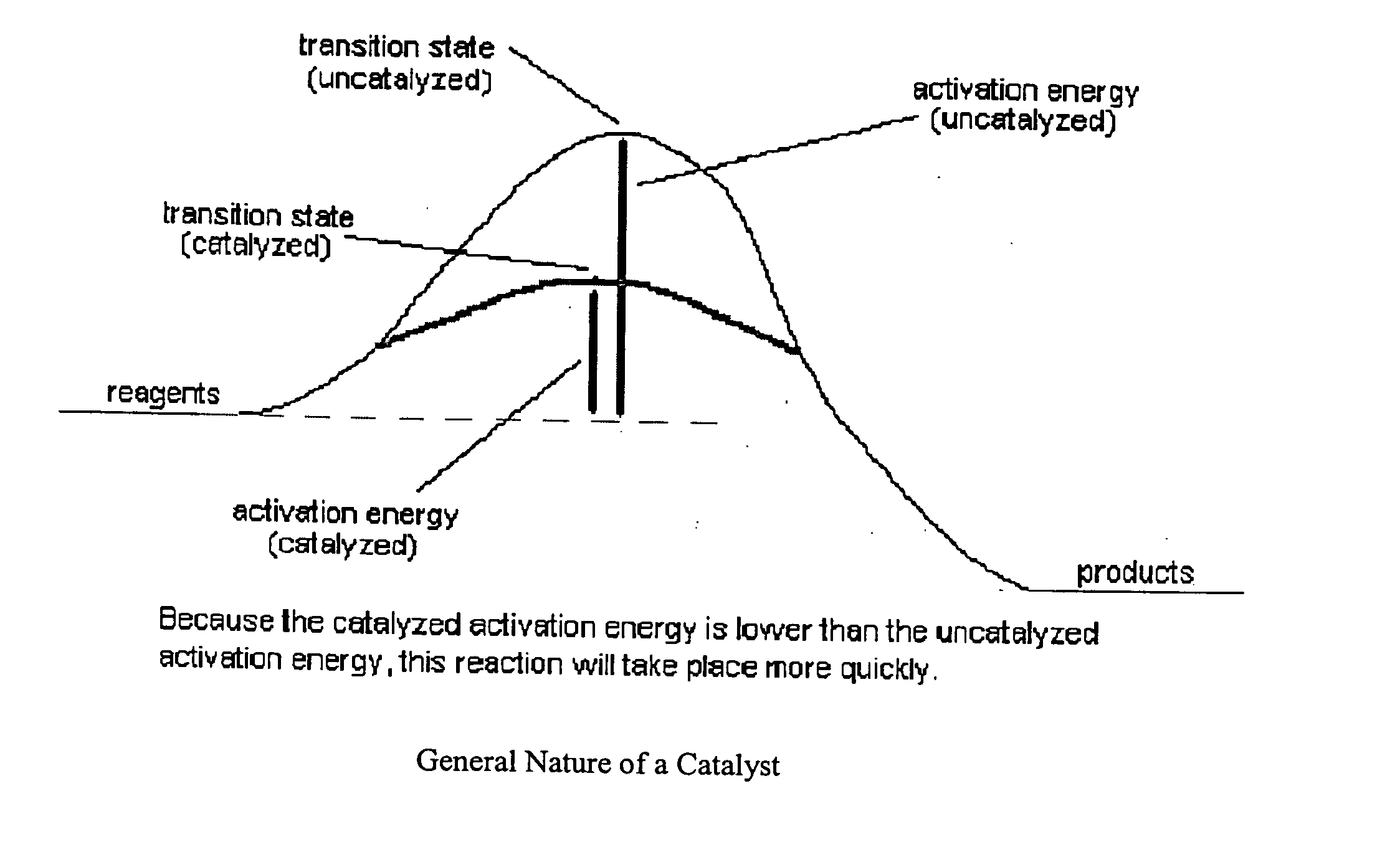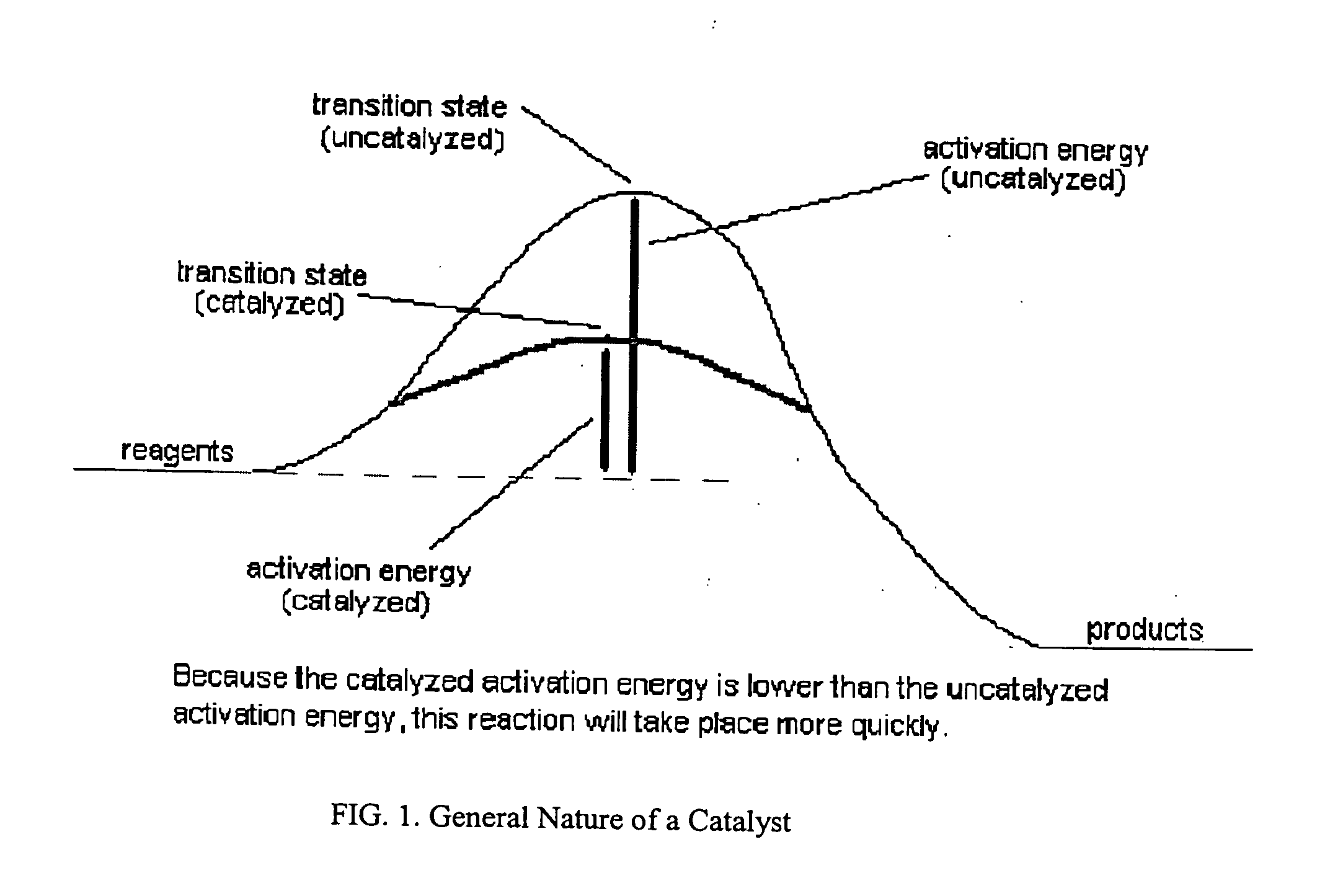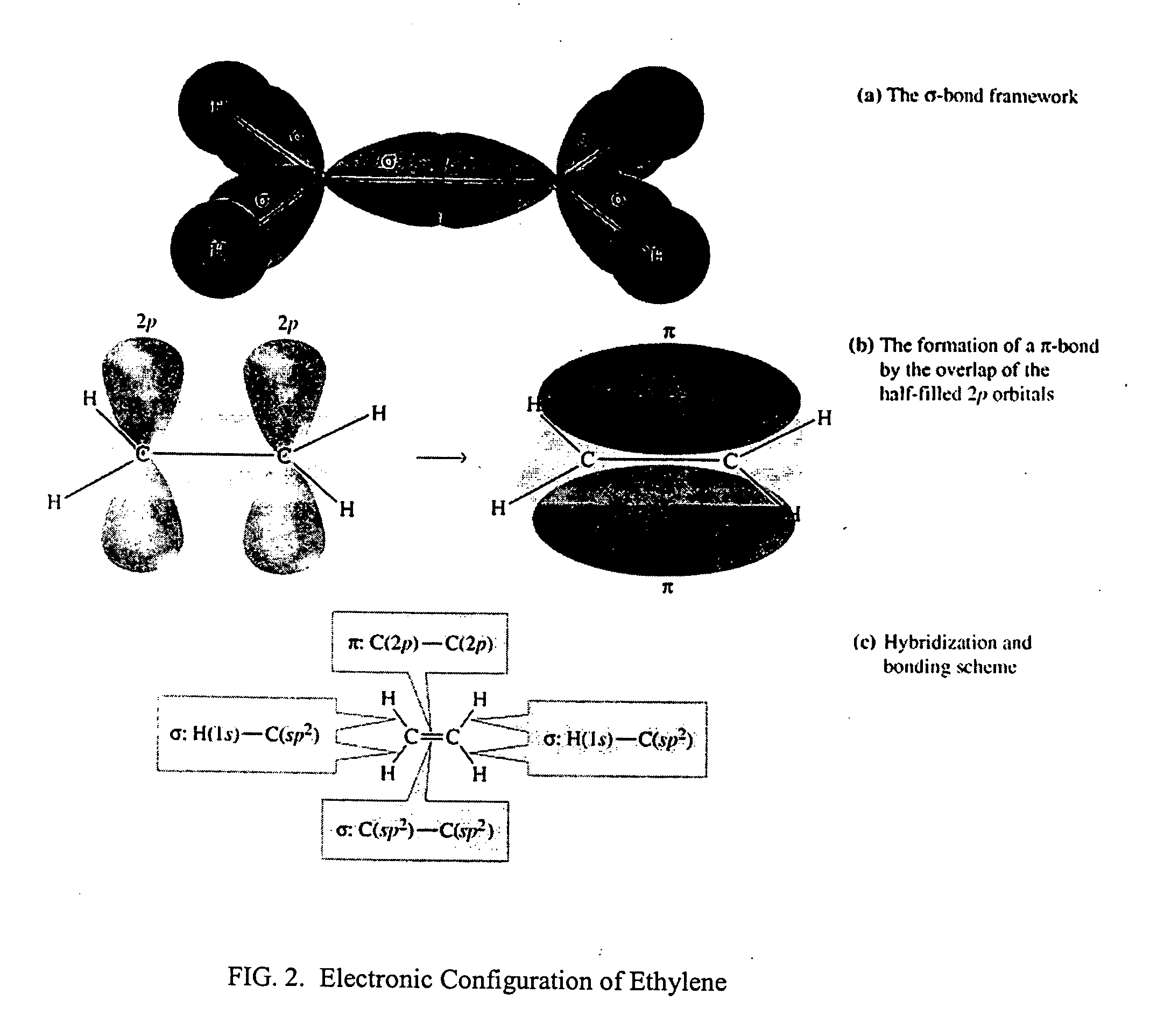Nanotechnological processing of catalytic surfaces
a technology of catalytic surfaces and nanotechnology, applied in the direction of physical/chemical process catalysts, separation processes, lighting and heating apparatus, etc., can solve the problems of increasing the reaction rate, reducing the activation energy, and zeolite frameworks, unlike pure silicon oxides, to achieve enhanced catalytic properties, efficient catalytic conversion, and high reaction rate
- Summary
- Abstract
- Description
- Claims
- Application Information
AI Technical Summary
Benefits of technology
Problems solved by technology
Method used
Image
Examples
Embodiment Construction
Creation of an Anatomically Flat Surface
[0042] Generally, for the simulation of a single surface structure of 2 nanometers in linear dimension or wavelength, the surface should be flat to substantially within approximately 1 atom height of 0.2 nanometers for a length of 10 times the 2 nanometer dimension or 20 nanometers. A bulk nanostructured material is created for a substrate, reducing the number of dislocations present. The presence of dislocations would severely reduce the efficiency of a catalyst created for a demanding catalysis reaction. One method of creation of such a substrate would be by rapid solidification. Consider FIG. 8, which relates the resulting structure of a material versus the solidification rate and the thermal gradient. It is seen that novel material structures not commonly seen in nature arise for cooling rates exceeding 1 million degrees centigrade per second.
[0043] One method of rapid solidification in current commercial practice is chilled block melt s...
PUM
| Property | Measurement | Unit |
|---|---|---|
| Nanoscale particle size | aaaaa | aaaaa |
| Efficiency | aaaaa | aaaaa |
| Wavelength | aaaaa | aaaaa |
Abstract
Description
Claims
Application Information
 Login to View More
Login to View More - R&D
- Intellectual Property
- Life Sciences
- Materials
- Tech Scout
- Unparalleled Data Quality
- Higher Quality Content
- 60% Fewer Hallucinations
Browse by: Latest US Patents, China's latest patents, Technical Efficacy Thesaurus, Application Domain, Technology Topic, Popular Technical Reports.
© 2025 PatSnap. All rights reserved.Legal|Privacy policy|Modern Slavery Act Transparency Statement|Sitemap|About US| Contact US: help@patsnap.com



